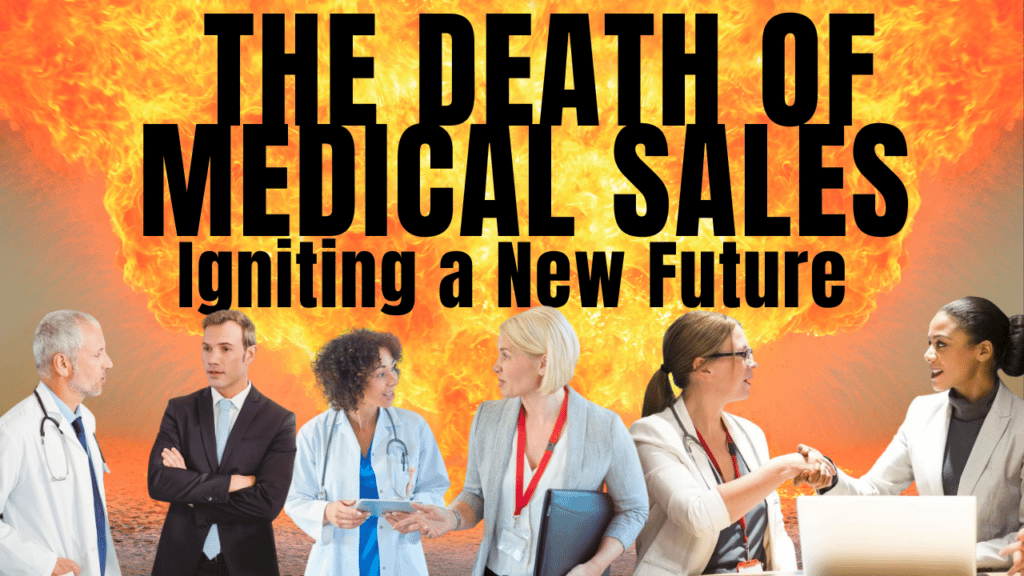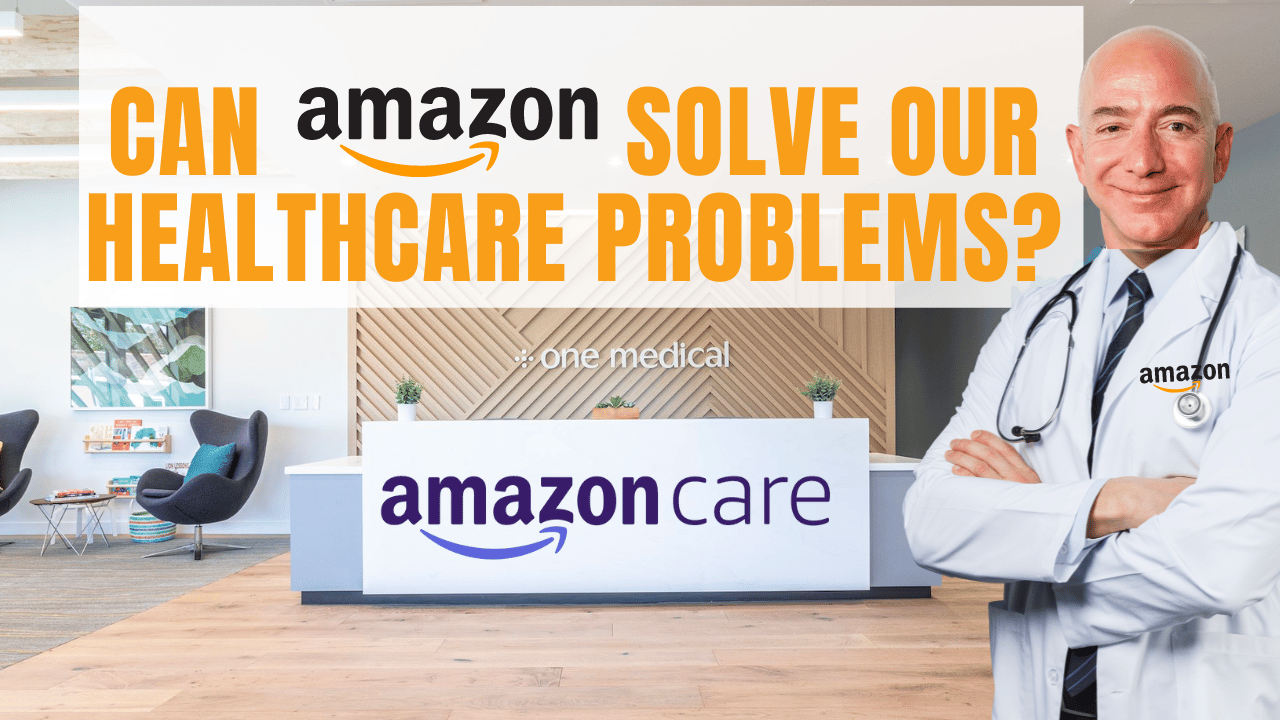*For physicians who read this blog you can get a AMA PRA Category 1 CME Credit for reflecting on this event. Just click this link and take a couple minutes to write your takeaways. https://earnc.me/am4X6Z
To grow, we must suffer. The passage from one world into the next requires bold steps.
Above all else, the medical sales professional is a soldier, for this professional greets every day as a day of battle.
Unfortunately, the game has changed and the battle for access has become complicated and unpredictable.
More importantly, this threatens the ability to drive technology adoption that will impact patient lives and improve healthcare delivery.
Great medical sales professionals are masters at the grind.
Show up early for surgical cases. Make relationships. Shadow prospective physicians. Sell.
That’s how our industry has driven technology adoption for decades.
We preach to physicians about our technology “augmenting their skills” by making their procedures more efficient, clinical interventions earlier, and drug dosage more precise.
“Doctor, our technology is meant to enhance your skills, not replace you.”
Medicine is a culture rooted in skepticism, and rightly so.
However, adoption happens when the truth can no longer be ignored and enough pain from the “old way” moves medicine forward.
That same time has come for our industry and we are overdue for a correction.
I’ve spoken, interviewed, written, presented, and persuaded as much as I can over the years about life sciences (medical device, biotech, pharma) adopting the digital approach on social media.
It’s not enough to just have a company page and run ads. Our sales people need to be online as well.
Our customers are online, having peer-to-peer conversations in realtime, all day long.
How to Go Where a Physician’s Attention Is

Attention is worth billions of dollars as Google, Facebook, Twitter, and others have shown.
So where attention flows, so does energy.
Persuasion starts with getting attention and more specifically going to where the attention already is.
If you cannot get attention, you cannot persuade.
This also goes for trust, relationship building, gathering research, and a whole list of things that go along with sales and marketing.
You go where the attention already is.
So when we look at publications by clinicians on PubMed around social media, it’s clear that it is no longer a fad but a trend.
Number of PubMed Social Media Publications Shows a Trend

The reason is simple; physicians are losing more independence.
I saw this begin in 2012 when I left medical school and the trend only accelerated since then.
According to the AMA, in 2018 47.4% of practicing physicians were employed, while 45.9% owned their practices, according to a new entry in the AMA Policy Research Perspectives (PRP) series.
Unfortunately, this trend was accelerated due to COVID.
The Physicians Foundation did a survey showing the majority of physicians (55%) expected a reduction in income over the next 12 months.
Of those anticipating an income reduction, most physicians (61%) expected a decrease of 25% or less, while 39% expected losses of 26% or more, the survey showed.
Notably, specialists were more likely to project larger losses than primary care physicians.
In July 2021, the American Medical Association sounded the alarm on upcoming pay cuts for physician practices and Congress’ alleged indifference about the reimbursement changes.
The AMA pointed out that physician practices are expected to face a 9.75% pay cut Jan. 1, 2022.
What do you think physicians who owned a practice or were part of a small group (aka Small Business) do when they have reduction in income and have to either sell their practice or close down all together?
They go to be employed by either a large practice (>50 MDs) and/or hospital system.
Which means they become employees. As employees, they have less independence.
Physician Psychology & How Independence Influences Medical Culture

Years ago I wrote about the Psychological Profile of Surgeons but this profile is largely applicable to all physicians in that they are used to being entrepreneurial and independent.
Culture built over centuries doesn’t go away. When independence is taken away in one area it will find a way to express itself somewhere else. Logically, physicians started with what made sense; more school.
The number of joint M.D./M.B.A. programs in America has grown from 6 to 65 in 20 years. (From 2011 and 2012 alone, the number increased by 25%.)
As the marketplace gets saturated with too many MD/MBAs, physicians have been adopting an asset that is free and more unique.
That asset is having a presence on social media.
No longer does a physician have to rely on just getting published in a journal or hoping for the annual society meeting to deem them worthy of podium time.
In a world where their influence and control is shrinking there are some things that they still own.
The ability to take to social media, build digital thought-leadership with peers, and open up to a sphere of opportunities in both academia and industry have driven this behavior change.
Data Behind Physician Activity on LinkedIn

When it comes to data, people make the mistake of using it the same way a drunk uses a lamppost; for support rather than illumination.
The mistake that industry often makes is thinking that physicians are immune to changes going on in society.
Despite the data, we’ve held on to a story we have in our heads, ignoring the data, both quantitate and qualitative.
Industry execs think physicians put on a white coat and go into work a different person than the consumer they are at home (conditioned by Amazon, Facebook, Instagram, NetFlix, Youtube).
But confirmation bias is alive and well. Maybe Im influenced by my bias for this to be true?
So what does the data show?
- Neurosurgery is a rare specialty, yet a LinkedIn search shows 7,800 neurosurgeons in the United States alone.
- Nephrologists not only have an active hashtag on Twitter #NephTwitter where they hold monthly journal clubs, but they also have the Nephrology Social Media Collective Internship, a 12-month, mentored training program during which selected interns participate in a curriculum of lectures, activities, and projects that aim to increase their knowledge, proficiency, and confidence in the use of social media.
- 2020 also saw numerous physicians launch their own blogs and podcasts. This isn’t social media, but content is all about distribution. Most of these podcasts has its own social media handle on Twitter and Facebook along with the physician having their own.
- Due to the pandemic, Twitter rushed to verify physicians and other health experts to combat misinformation. While many physicians took part to provide reliable information on COVID, this also invited many to take advantage of getting on Twitter to get the coveted “blue check mark” verification.
- In 2018, there were over 2000 healthcare providers on Twitter who tweet more than once per day and have at least 300 followers.
Reality is the best trigger for changing behavior, so if you’re in the industry and reading this, do this:
- Search your prospective physician title on LinkedIn (e.g. cardiac surgeon and/or cardiothoracic surgeon) and see the number that pops up (31,000 in the U.S. alone)
- Go on Twitter and search #MedTwitter and #MedEd. See how many tweets in realtime physicians are sending out. Look at other hashtags such as #CardioTwitter or #SurgTwitter. The discussions will get more specific and increase in frequency.
How Many Practicing Orthopedic Surgeons Are On LinkedIn?
I did a search on Google to see how many orthopedic surgeons are actively practicing in the US.
According to Definitive Healthcare’s Physicians platform, which tracks over 1.7 million physicians, there are more than 30,500 orthopedic surgeons in the U.S. About half of those surgeons report a sub-specialty with the 3 most common being sports medicine, hand surgery, and joint replacement.

Doing a search on LinkedIn, I found 31,000 orthopedic surgeons. One reason for the discrepancy is that many orthopedic surgeons also create personal profiles for their clinic.

Qualitative Data On Physician Activity on LinkedIn
While numbers support the logic, stories are what truly persuade. These are the qualitative data points that show how physicians prefer engagement; on social media.
Here’s a glimpse of a handful of physician comments on my own posts, which range from company news and clinical research to self-development.

If you need to see it for yourself (which I encourage) click to this recent article about physician influencers on social media and take a glance at the comment section.
One of the more telling comments was one made by Dr. Andrew Sauer who started and built the University of Kansas’ Center for Advanced Heart Failure and Transplantation, turning it into a powerhouse within a few years.

There’s even more proof of this, and this isn’t even counting what I’v documented from Twitter. But Im pretty sure you get the point.
The 2020 MedTech Trend That Will Become the 2022 Norm
COVID-19 did not create any new trends. It only accelerated existing trends by 5-10 years. This is the first time in human history where every single person is evaluating every aspect of life.
How do I educate my kids? How can I get healthier? Should we have a remote workforce?
For hospitals, here are some of those questions:
- Why are we letting in medical sales reps who are not doing cases today?
- Why are we letting medical sales reps who don’t even have products here?
- Why are we letting in medical sales reps at all?
A recent survey of medical device leaders conducted by ExplORer Surgical revealed that fewer than 20% of medical device reps have been able to cover cases in person as a result of hospital restrictions, company reservations regarding risk, or their own concern about exposure to COVID-19.
- More than 70% of the life sciences reps report they are engaging in remote support of their customers via video or phone.
- More than 75% of respondents also feel that remote access and support is here to stay, and that it will be an integral part of their business model for the future.
- 93% of executives felt hospital access and HCP interaction will never be the same as it was pre-COVID
You can deny this all you want but the day has finally come. This is just like the day when email finally took off in adoption.
Physicians did not welcome reps walking into their office or surgical theatre to pitch products.
They simply asked you to email them.
Dwell on the past and you’ll lose an eye. Forget the past and you’ll lose both eyes.
Industry leadership is also being forced to change behavior due to the pain of reality.
Leadership and boards are now seeing the amount they spend on things like training and even sales prospecting.
There’s a massive financial gain this year from not having travel and meal expenses from the field.
And since hospitals are requesting more “digital” approaches to training and communication, that’s where the investment is going.
Do you think this will revert back when things “return to normal”?
This was a one-way ticket and it will not revert back. Once you see something like this and live it for a year you cannot unsee it.
Many peers have disagreed with me over the years and I welcome that. Disagreements are not threats but opportunities for learning.
How to Help Medical Sales Reps Adapt to the New Norm

This article was an update from many talks I’ve given since 2015 plus my article from November 2020.
I’ve had a vision to lead a change in our industry around how we sell and market to physicians.
I see talented reps who love what they do put under tremendous stress to influence surgeons, drive technology adoption, and hit quota.
Yet there has been no investment in helping train reps to adapt to market changes and more importantly the way physicians want to be engaged with.
The future medical sales professional in my mind will be a hybrid. One that has the tools and training to do marketing through content-based networking and selling.
This will empower them to have a sphere of influence in a way that makes them the product.
We have to break our old beliefs that the following will work:
- Emailing out of the blue with no context
- Showing up unannounced to the clinic
- Hanging out by the scrub sink to chat with a surgeon
- Spamming inboxes with garbage
- Spending countless hours on the road and in hotel rooms only to have meetings cancel or worse, hope that you get lucky and catch the prospect.
I have one belief that I spent years stress testing and collecting data on:
Engaging with physicians at scale is the key to 10xing the deals in your pipeline to drive technology adoption. It’s only possible using content-based network effects on social media.
Business has always been about who you’re doing it with and the future medtech sales professional will be a big part of why a physician might be interested in a new technology.
I spent the past six years testing this hypothesis myself as well as with various sales reps.
The data illuminates a path forward.
The problem is that for this vision to be realized I cannot risk trying to do this only at the company that I would be working for.
So I’ve decided to go all in on this vision.
I resigned in December and am launching a venture to help medtech companies grow sales and drive product adoption using social media.
The reps who embrace this new way will be a small handful. Call them the “1%ers”or “innovators”.
Im looking for the medical reps looking to take action and go all in on realizing this new vision along with the marketing teams that are ready to adapt their strategies to support them.
Together, we will change our industry for the better, and our customers will thank us.
Change can be scary and I’ll admit that. There’s no telling what will happen.
But it’s too late to be scared. It’s time for action.
Want to join the discussion with physicians and medtech leaders? Leave a comment on the original article on LinkedIn.





